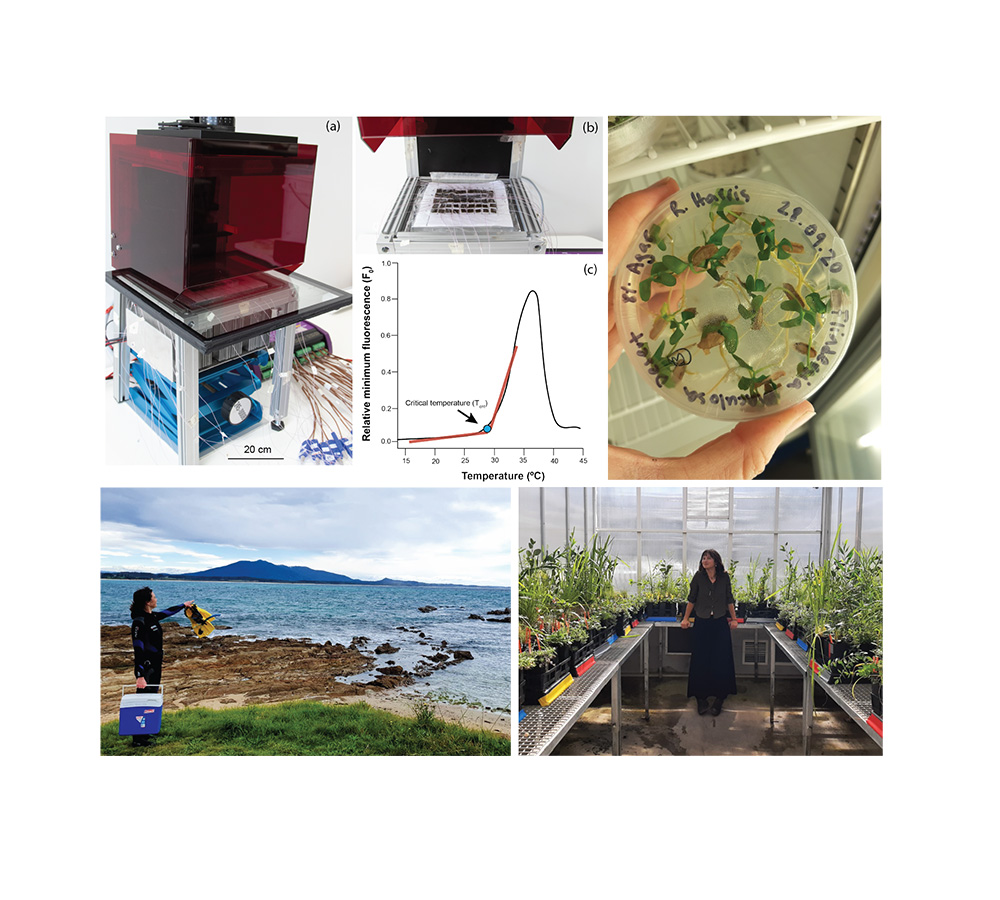E&E PhD Exit Seminar: Bridging concepts of thermal biology from land to sea
My thesis explores the relationships between temperature and photosynthetic organismal physiology, focusing on the thermal tolerance of land plants and seaweeds, which are crucial components of terrestrial and marine ecosystems.
Speakers
Event series
Content navigation
Description

My thesis explores the relationships between temperature and photosynthetic organismal physiology, focusing on the thermal tolerance of land plants and seaweeds, which are crucial components of terrestrial and marine ecosystems. With temperature extremes posing acute challenges to 'plant' health and survival, my research aims to elucidate the physiological mechanisms underpinning plant responses to these extremes, emphasising thermal tolerance in both terrestrial and marine contexts. My thesis employs scalable and comparable metrics for thermal tolerance, crucial for high throughput research in the field. It investigates various methodologies to assess thermal tolerance, including the use of chlorophyll a fluorescence to gauge photochemical efficiency. The integration of genomic research further enriches my thesis, providing insights into the mechanisms of stress response and the opportunity for identifying genetically robust individuals for enhanced resilience for future restorative efforts. The empirical work here comprises four comprehensive studies. The first focuses on the thermal tolerance breadth of Australian angiosperm seedlings, revealing that combined thermal stressors narrow their thermal tolerance breadth (the difference between the upper and lower critical limits to temperature before denaturing of photosynthetic function. This finding informs the subsequent study, which adapts high-throughput techniques from terrestrial plant research but for kelps. This methodological innovation facilitates rapid assessment of kelp thermal tolerance, marking a significant advancement in phycology. Further, my thesis then examines the genetic diversity and thermal tolerance of different populations of the seaweed Phyllospora comosa, revealing a latitudinal gradient in thermal tolerance correlated with genetic structure. This study underscores the vulnerability of northern populations with high thermal tolerance but low genetic diversity, while highlighting central populations as key genetic repositories for conservation. The final experimental chapter investigates the spatial and temporal variation in thermal plasticity of dominant temperate canopy-forming seaweed species. It aims to discern differences in thermal tolerance and respiration across space and time, pinpointing periods and locations of heightened vulnerability. In conclusion, my thesis synthesises these findings, reflecting on their contributions to the field. It discusses the lessons learned from terrestrial systems and their applicability to seaweed ecology, providing valuable insights for conservation strategies in the face of climate change. The research presented here not only advances our understanding of plant responses to thermal stress but also lays the groundwork for future investigations into the thermal biology of seaweeds and other key species in changing climates.
Location
Please note: this seminar will be held in the Eucalyptus Rm and via Zoom, details are included below.
Eucalyptus Room, Rm S205, Level 2, RN Robertson Building (46)
Please click the link below to join the webinar:
https://anu.zoom.us/j/89521120138?pwd=d2xRamFHRkR6eU5HazlIQnUrVXNoQT09
Passcode: 940333
Canberra time: please check your local time & date if you are watching from elsewhere.

